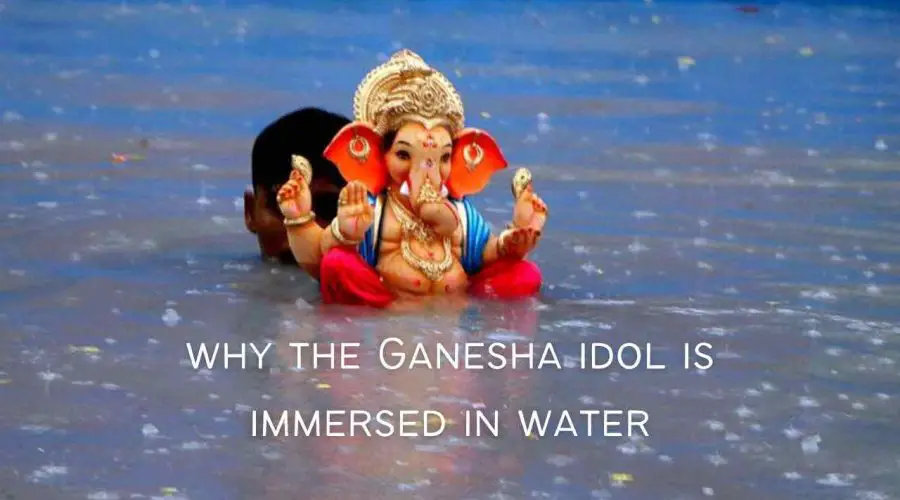Know the reason why the Ganesha idol is immersed in water after Ganesh Chaturthi?
Ganesh Chaturthi or Vinayaka Chaturthi festivities end with the immersion or Visarjan of the clay Ganapati statue into water.
After the Ganesh Chaturthi, Ganesh murtis are immersed (not thrown) in rivers, lakes, ponds, or the ocean. It may also be carried out at home.
But do you know the reason why the Ganesh statue is submerged in water?
The symbolic reason behind Ganapati Visarjan
In Hindu culture, the Hindus show a lot of respect to Brahman, or the Supreme Soul present in all living and non-living things. However, the vast majority of humanity cannot worship this formlessness. They require a shape to whom they can pray, seek aid, weep, and receive benefits.
Nirguna Para Brahman assumes the shape of Ganesha. Ganesha is the primordial sound ‘OM’ or the initial ‘Vaak’
Mixing clay with water gives form to the formless. Each person carries a clay statue of Ganesha into their home. This is the Supreme Being’s homecoming.
After the festivities, it is time to embrace the everlasting cosmic law that everything that has taken shape must return to its formless state. It is a perpetual cycle (Chakra).
Why is Ganesha’s idol immersed in Water after the Ganesh Chaturthi festival?
The formlessness gives way to the form, then returns to the formlessness. Each year, Ganesha appears to tell us that although appearances vary, the Supreme Truth remains constant. The body perishes, but the Brahman abiding within it is eternal. This body becomes energy for another, yet the energy source remains unchanged. When we comprehend this, we attain happiness.
The act also represents the Hindu notion of Moksha, or emancipation, which means absolute detachment. This is what is meant by Moksha – liberation – no attachment, not even to gods.’ Accordingly, we make Ganesha from clay, worship it, and then immerse it (Visarjan).
An important aspect of Ganesh Visarjan
- Please use only a clay Ganesh statue and do not toss plastic into the water. Perform a symbolic immersion in a bucket of water and then use it to water plants.
- Only clay should be used to form the Ganesha statue. Maa Parvati fashioned him from the dust within her own body.
- Only clay murtis should be submerged in rivers, lakes, ponds, or the ocean.

